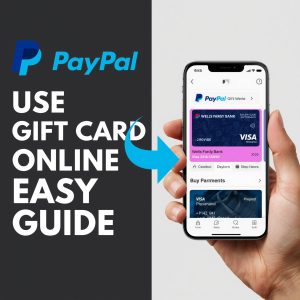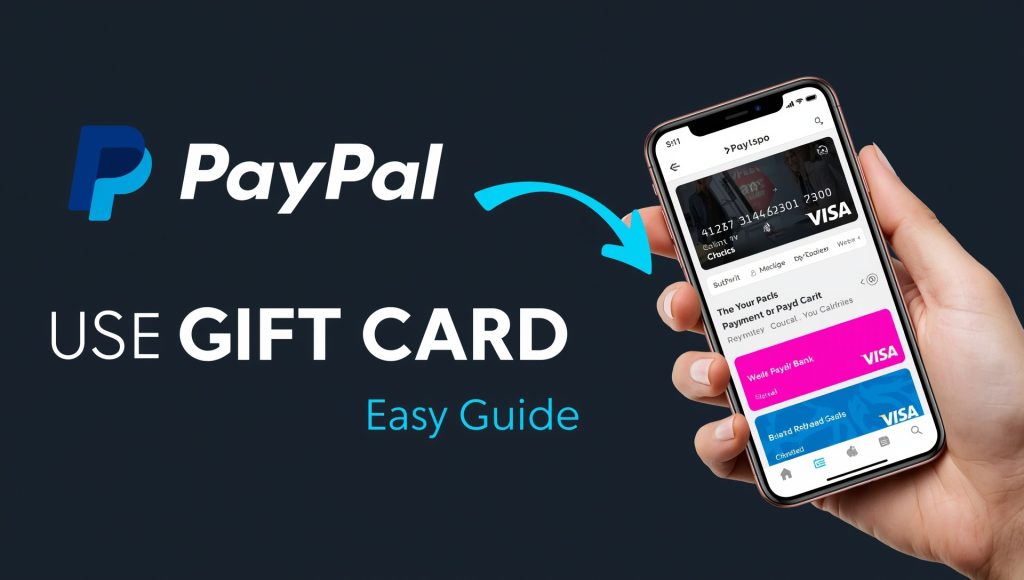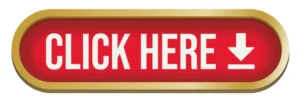Introduction: Why PayPal Still Dominates in 2025
In today’s digital economy, online payments fuel almost everything—eCommerce, freelancing, gaming, subscriptions, and even donations. While dozens of apps and wallets now exist, PayPal remains a global leader in secure digital payments.
From its early days in the late 1990s as a small internet banking idea, PayPal has transformed into a financial powerhouse with 400+ million active users across 200+ markets. It’s not just a payment method—it’s a brand of trust.
In this guide, we’ll explore everything about PayPal:
-
how it works,
-
its features & fees,
-
PayPal for freelancers and businesses,
-
gift cards & giveaways,
-
scams & security,
-
and what the future looks like for PayPal in 2025 and beyond.
This is your all-in-one resource—whether you’re a first-time user, a freelancer receiving global payments, or a business scaling eCommerce sales.

1. What is PayPal?
PayPal is a digital wallet and online payment platform that lets users send, receive, and hold money electronically. Think of it as a bridge between your bank account, debit/credit cards, and the internet.
With PayPal, you can:
-
Pay for products online without sharing card details.
-
Receive money from clients, customers, or friends worldwide.
-
Store funds securely in your PayPal balance.
-
Use PayPal at millions of online and offline merchants.
It’s basically the default payment system of the internet.
A Brief History of PayPal
-
1998 – Founded as Confinity by Max Levchin, Peter Thiel, and Luke Nosek.
-
2000 – Merged with Elon Musk’s online banking company X.com.
-
2002 – Acquired by eBay and became the main payment system for eBay sellers.
-
2015 – Spun off from eBay and became an independent publicly traded company.
-
2020–2022 – Expanded into crypto payments and Buy Now, Pay Later (BNPL).
-
2025 – Still leading global digital wallets, competing with Apple Pay, Google Pay, Wise, and more.
2. How PayPal Works
Using PayPal is surprisingly simple—even if you’ve never touched an online wallet before.
Step 1: Create a Free Account
-
Visit PayPal.com or download the PayPal app.
-
Choose between a Personal or Business account.
-
Enter your email, create a password, and verify your identity.
Step 2: Link Your Bank or Card
To move real money, you need to connect PayPal to a funding source:
-
Debit/Credit card (Visa, MasterCard, AmEx, Discover).
-
Bank account.
-
Mobile wallets (in some countries).
Step 3: Sending Money
-
Enter the recipient’s PayPal email or phone number.
-
Type in the amount & currency.
-
Add a note (optional).
-
Choose to send as “Friends & Family” (free in some cases) or “Goods & Services” (buyer protection included).
Step 4: Receiving Money
-
Provide your PayPal email or PayPal.Me link.
-
Money arrives instantly in your PayPal balance.
-
You can keep it there or withdraw to your bank account.
Step 5: PayPal Balance
Your PayPal balance works like a mini bank account. You can:
-
Spend directly online.
-
Transfer to your card/bank.
-
Buy gift cards or shop with PayPal Checkout.
3. PayPal Features & Services
PayPal isn’t just about sending and receiving money—it’s a full financial ecosystem.
a) PayPal Wallet
Your digital hub where you store money, manage linked cards, and track transactions. Works like a bank account but way faster.
b) PayPal Credit
A Buy Now, Pay Later (BNPL) service available in certain regions. Users can:
-
Shop now and pay later in installments.
-
Get interest-free financing on some purchases.
-
Access a line of credit for online shopping.
c) PayPal Business Accounts
Perfect for entrepreneurs and small businesses:
-
Accept payments from around the world.
-
Access analytics, invoices, and payment tracking.
-
Integrate PayPal with Shopify, WooCommerce, Wix, and other platforms.
d) PayPal Checkout
The famous PayPal button seen on millions of online stores. Benefits include:
-
One-click checkout with stored PayPal details.
-
Higher conversion rates for businesses (since customers trust PayPal).
-
Support for multiple currencies.
e) PayPal Here & QR Code Payments
In physical stores, PayPal allows merchants to:
-
Accept card payments via PayPal card readers.
-
Use QR codes so customers can scan and pay.




